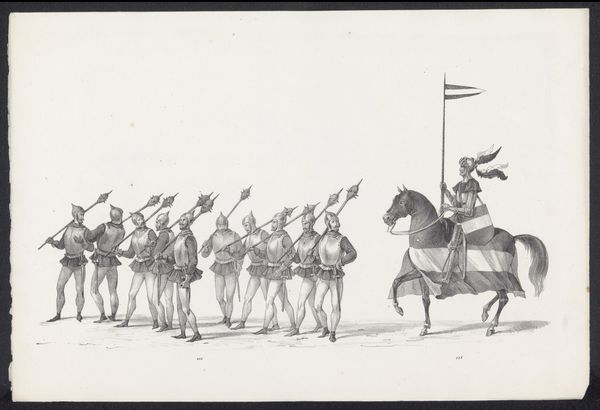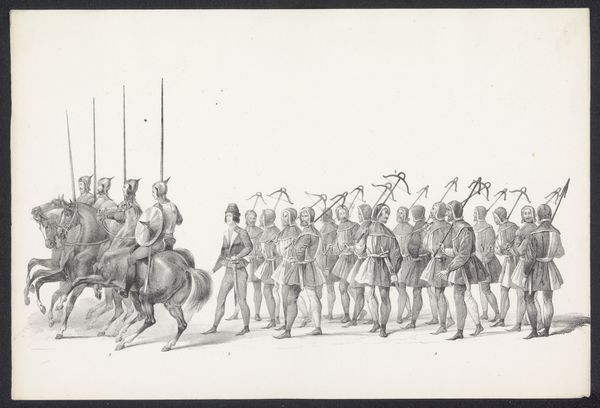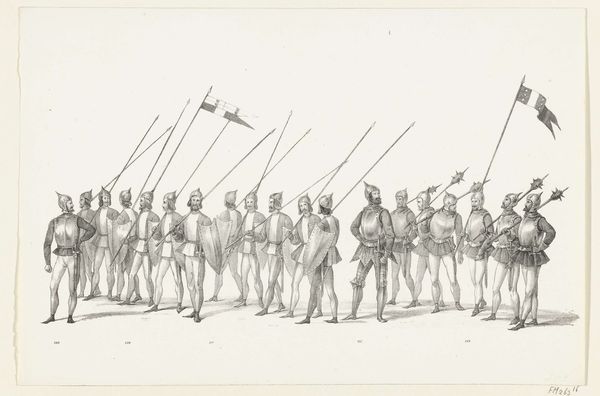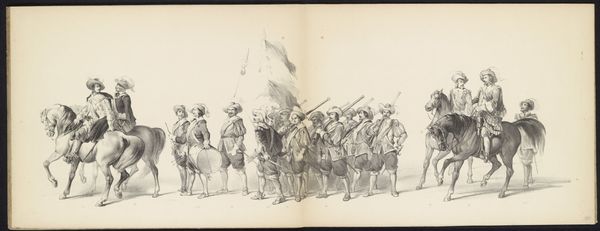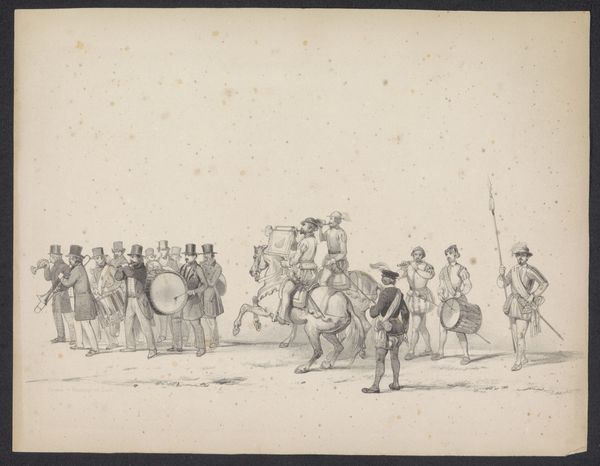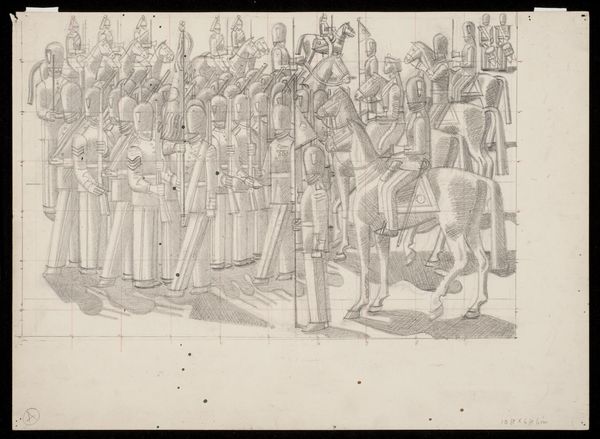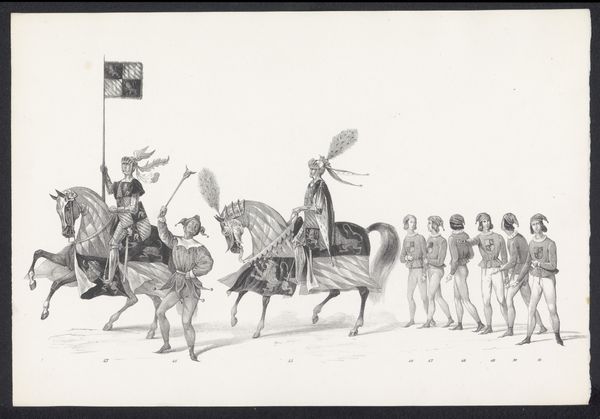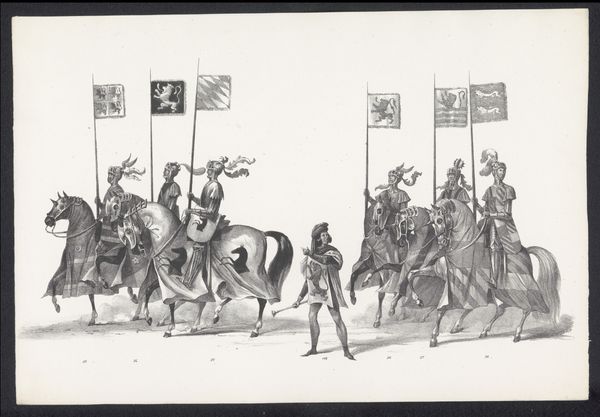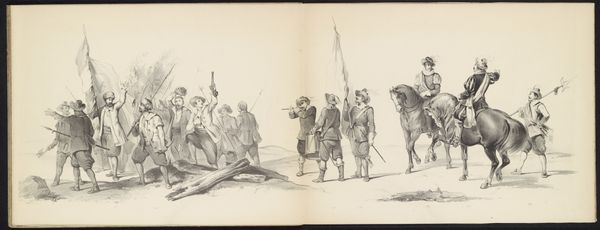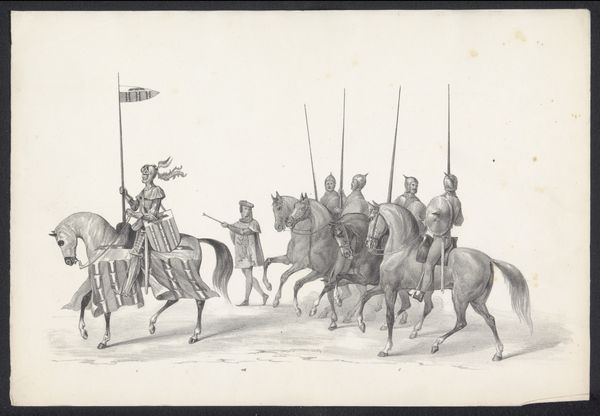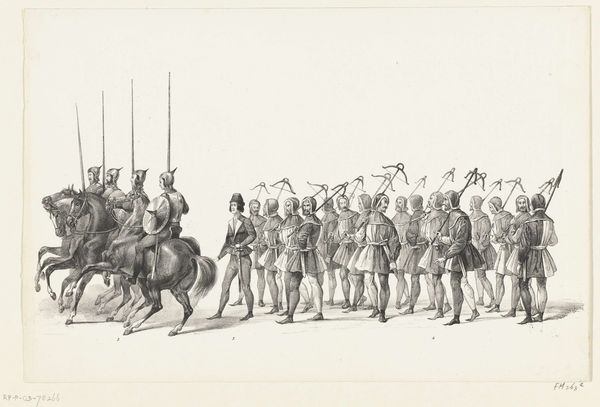
Maskerade door studenten van de Leidse Hogeschool, 1840 (plaat 4) 1840
0:00
0:00
jacobusludovicuscornet
Rijksmuseum
drawing, print, etching, ink, pencil, engraving
#
portrait
#
drawing
#
ink drawing
# print
#
etching
#
classical-realism
#
figuration
#
ink
#
classicism
#
group-portraits
#
pencil
#
orientalism
#
line
#
genre-painting
#
history-painting
#
academic-art
#
engraving
#
realism
Dimensions: height 232 mm, width 340 mm
Copyright: Rijks Museum: Open Domain
Curator: At first glance, it looks almost like a fashion illustration – a meticulous lineup of figures poised in a sterile space. Very curious. Editor: This is “Masquerade by students of the Leiden School, 1840, plate 4” by Jacobus Ludovicus Cornet, currently residing at the Rijksmuseum. It is rendered as an etching, a meticulous print, capturing a specific moment in time, really. It gives off almost a reportage vibe. Curator: Yes, there's definitely a stillness to it that contrasts with the implied action. It's as if the artist has pinned down these figures mid-parade. Look at the way the lines create a texture like shimmering light on metal, especially on the spears. Editor: Right? It definitely speaks to a period deeply interested in historical reenactments and the romanticized notion of civic duty. Note the uniformity, and also consider the social hierarchies they reflect and perhaps even challenge through this "masquerade." Think about the dynamics of performance here, of students embodying certain roles within a broader societal narrative. Curator: Ah, the students' roles are so interesting because it gives a youthful playfulness to the historical solemnity. The artist renders all their postures as idealized. I suppose it begs the question of whether they were encouraged to see themselves as having a meaningful relationship with their country's military traditions. Editor: Absolutely! This goes to the heart of national identity construction in the 19th century. Visual culture contributed significantly to shaping such perceptions. I'd be interested to know what the shields bear for markings – who exactly are the subjects representing here, and how were those representations received back then? Curator: I suppose you wonder, then, if we can consider this masquerade and piece of art, overall, an attempt at reclaiming the past or idealizing a sense of present authority. It's just something about the way that the two front figures’ apparel is colored differently that feels striking to me! Editor: Indeed! Perhaps Cornet suggests we see a desire among these students for Holland to take on what was seen to be a classical view of valor. Thanks for pointing to such visual elements and to considering that complexity! Curator: Of course, thanks for thinking about it with me! This one definitely asks questions rather than makes declarative statements.
Comments
No comments
Be the first to comment and join the conversation on the ultimate creative platform.
